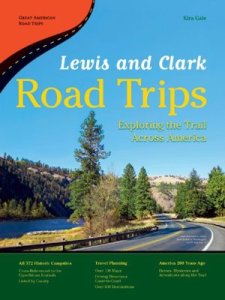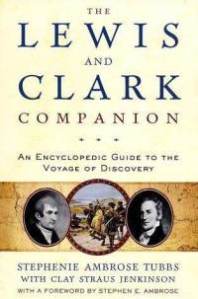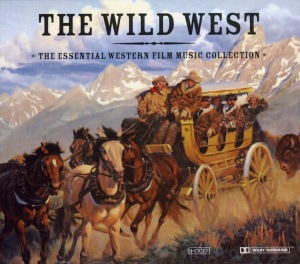“We shall delineate with correctness the great arteries of this great country: those who come after us will fill up the canvas we begin.” – Thomas Jefferson
After seeing the documentary film “Lewis & Clark: The Journey of the Corps of Discovery” by Ken Burns a couple years ago, I found myself wholeheartedly impassioned about the monumental scope of their adventure and stories of the real people behind it. I was inspired to obtain a detailed, firsthand account of the journey and, after some research, decided on the abridged edition of “The Lewis and Clark Journals: An American Epic of Discovery” by Gary Moulton, as he seems to be the most respected editor and steward of the journals. The book consists of the most important and interesting journal entries, spelling and grammar errors intact as originally written (plus helpful footnotes from the editor), therefore allowing the reader to interpret the journals for themselves. Each day of the several weeks I spent reading it was a wonderfully engrossing experience and I looked forward to every new entry and leg of the journey. Somewhere along the line, it became apparent to me that the Lewis and Clark Expedition was likely going to captivate me for the rest of my life.
One day, when dreaming of a vacation, I plunked down my Google Maps “Street View Guy” at a completely random spot along the Missouri River in Great Falls, Montana. I started “exploring” and got so excited that, with a four day weekend ahead, I decided to seize my opportunity and spent about a month planning a whirlwind road trip of Lewis and Clark sites in Montana (and just over the border to Idaho).
I spent hundreds of hours researching the trip. Some of the resources I used (and brought along) are as follows:
While I completely recommend this amazing 497 page book, after reading it, my interest in the Expedition deepened considerably and I now find myself coveting the unabridged edition.
Unabridged edition “The Definitive Journals of Lewis and Clark (7-volume set)” by Gary Moulton
At 3,404 pages, this is quite the series of tomes.
There are even supplementary volumes:
- Volume 8 – Journals from the return journey from the point when party split up after reaching present-day Idaho to after they were re-united and arrived back in St. Louis at the end of the expedition.
- Volume 9 – Journals of John Ordway and Charles Floyd
- Volume 10 – Journal of Patrick Gass
- Volume 11 – Journal of Joseph Whitehouse
- Volume 12 – Herbarium of plant specimens collected on the expedition
- Volume 13 – Comprehensive Index
Luckily, although not necessarily as useful for leisure reading, the journals are available free on the University of Nebraska Library website (which is why I am still debating buying this set). As internet access is spotty at best in most of Montana, you will want to research key sites of interest before you go, or from your hotel as you travel.
Curious about where on earth the original, physical journals are stored? I was, too! After some research, I found that they are kept in the library of The American Philosophical Society in Philadelphia. Apparently, they put some of the journals on display to the public every summer. However, they do have free access to scans of important passages from the original journals posted on their website for you to view.

DeLorme Montana Atlas and Gazetteer
Although I did notice some spelling errors with place names at times, this, or any similar atlas, will be generally useful for plotting your route and general highway and back roads navigation. On the road, it also serves as a good back up to GPS (which, as with the internet, can be spotty in Montana). However, to really get down to details, you will likely want to use Google Maps extensively as you plan your route as even an atlas of this detail is woefully inadequate in some situations. For example, this atlas does not contain any zoomed in street maps of the major cities in Montana. Great Falls was particularly troublesome for me when using this atlas as only a small corner of Page 42 is devoted to it, when there are numerous and important sites in and around Great Falls due to the amount of time the expedition spent portaging the area’s waterfalls.

“Lewis and Clark Road Trips: Exploring the Trail Across America” by Kira Gale
This oversized (at least, bigger than a normal paperback), glossy guide is likely the best Lewis and Clark travel book out there at the moment. It is separated into regions, and even includes regions which have interesting Lewis and Clark related sites, but which are not part of the expedition’s route (ex. Lewis’ grave site, Clark’s birthplace, Thomas Jefferson sites and other places “back east”). She also provides suggestions for interesting non-expedition related sites you may encounter on your journey, several of which I ended up visiting. The book is handily color-coded and includes fairly good directions to each site, although the maps are a bit general, causing you to have to double check some of the more remote or particular ones on Google Maps. The sites she covers in the book are numerous and quite extensive; however, information supplied on each is only a short summary (a couple sentences to a paragraph) regarding the background of the site. If you are especially interested in a particular site, you will want to research it more in depth before your trip, and you may want to bookmark the correlating actual journal entries and bring them along, as I did. A handy feature of this book is that, so long as you have the unabridged Gary Moulton volumes of the journals, Kira Gale provides page number references so you can link the journal entries up with the list of expedition campsites she provides at the end of her own book. The trouble with the list of campsites, and my only real disappointment with Gale’s book is that, since the exact locations of the campsites are either not entirely known in general, not made available to the public, or are on private land, the campsite locations listed in the book are only to the nearest half mile. As she explains, for example, “Campsite #465 is listed as 4.5 miles SW of Poplar, MT. Does this mean #265 is 4.5 miles southwest of Poplar? Not necessarily. The distance is given to the nearest half mile. Therefore the site is between 4.0 and 5.0 miles from Poplar. Also the direction SW is not exact. It only means #265 is closer to southwest than any other compass direction. The neighboring compass directions are west by southwest and south by southwest. This increases inexactness by about another mile. Putting both together; distance is uncertain by about a mile and direction is indefinite by about a mile…” Despite this, the book is well compiled and indispensable. A lot of the content of this book is also, thankfully, available online on the author’s website.

“Traveling the Lewis and Clark Trail” by Julie Fanselow
This book pairs well with Gale’s as, while not quite as useful in terms of clear-cut organizational structure and logistical trip planning in a sort of visual way, Fanselow provides a lot more detail on the actual sites and general journey of the expedition, which Gale’s is lacking. It is very well written, useful, inspirational, and has useful tips on what to expect during your journey.

“Undaunted Courage: Meriwether Lewis, Thomas Jefferson, and the Opening of the American West” by Stephen Ambrose
This seems to be the most definitive and loved Lewis and Clark book, although it does focus mainly on Lewis. I learned so much from this book, particularly about the pre-expedition history of Lewis, and it came highly recommended to me by others who have driven the entire Lewis and Clark Trail.
I bought the abridged version of this book on CD. At 4.75 hours, it truly was one of the highlights of my trip. We would listen to it for an hour at a time in between major Lewis and Clark sites and it kept us enthralled, entertained, and awed. I wanted to listen to the whole thing again on the drive back home!

“The Lewis and Clark Companion: An Encyclopedic Guide to the Voyage of Discovery” by Stephenie Ambrose Tubbs
This is indeed a great encyclopedic companion to the journals. Ahhh, so that’s what a “burning glass” is! Oh, “camas” does that to the digestive system? Etc.

“Why Sacagawea Deserves the Day Off and Other Lessons from the Lewis and Clark Trail” by Stephenie Ambrose Tubbs
This is a slim book of essays which seems to have been a side project to her research on the above “Lewis and Clark Companion”. The daughter of Stephen Ambrose, she hails from the First Family of Lewis and Clark Scholars. Her family’s years of extensive travel along the Lewis and Clark Trail are proof of their love and knowledge for the subject. The essays are amusing and insightful. Reading them feels like having an interesting Lewis and Clark conversation with a close friend. During our trip, my husband and I enjoyed reading the essays aloud to each other and discussing the points made by Ambrose Tubbs as we went along.

CD – “Lewis & Clark – Original Soundtrack Recording” from the Ken Burns documentary
In addition to the documentary itself sparking my original interest in Lewis and Clark, the soundtrack from the film is phenomenal. I listened to this in the car numerous times during our trip and never tire of it (as my husband will somewhat annoyedly attest!). Much of it is so true to the music of Lewis and Clark’s time and all of it is extremely emotive of the exact feelings I have about the expedition. I cannot recommend enough that you buy a copy of this as it was so touching to listen to during my trip (and before and after even right now!).
Another CD which is not Lewis and Clark related but which I enjoy bringing on road trips is:

“The Wild West: The Essential Western Film Music Collection”
Contains all the well-known theme songs from famous western movies and provides the perfect soundtrack for road travel through the glorious scenery of the American west.
Will post more soon about the actual details of the journey.
